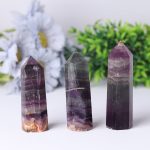A Comprehensive Guide to the Value of Moonstone
Moonstone, an enchanting gemstone known for its pearly sheen and ethereal beauty, has captivated the hearts of jewelry enthusiasts and collectors alike. As a result, its value has fluctuated over time, reflecting its popularity, scarcity, and quality. In this article, we will delve into the intricacies of moonstone valuation, exploring the factors that influence its worth and providing insights into its current market standing.

Factors Influencing the Value of Moonstone
The value of moonstone is influenced by several key factors, including:
- Clarity: The clarity of moonstone refers to the presence of inclusions or blemishes within the stone. Stones with fewer inclusions and a higher level of transparency are considered more valuable.
- Carat Weight: The weight of a moonstone is measured in carats. Larger moonstones are generally more expensive than smaller ones, assuming all other factors are equal.
- Color: Moonstone exhibits a range of colors, from bluish-white to yellow, orange, green, and even brown. Scarcer colors, such as blue and yellow, are more highly valued.
- Moonstone Shiller: The moonstone shiller is the characteristic play of light that gives the stone its enchanting appearance. Brighter and more distinct shillers contribute to a higher value.
- Cut and Shape: The cut and shape of a moonstone can influence its value. Well-cut stones that enhance the shiller effect and showcase the stone’s natural beauty are more sought-after.
Current Market Value of Moonstone
The current market value of moonstone varies depending on the aforementioned factors. According to the Gemological Institute of America (GIA), the average price range for moonstone per carat is as follows:
| Clarity | Carat Weight | Color | Moonstone Shiller | Price Range |
|---|---|---|---|---|
| Eye Clean | 1-2 Carats | Blue | Bright, Distinct | $250 – $500 |
| Lightly Included | 3-5 Carats | Yellow | Moderate | $100 – $200 |
| Moderately Included | 6-10 Carats | Orange | Noticeable but Diffused | $50 – $100 |
It is important to note that these prices are estimates and can fluctuate based on market demand, supply, and other factors.
Factors Influencing Value: Table 1
| Factor | Impact on Value |
|---|---|
| Clarity | Higher clarity increases value |
| Carat Weight | Larger carat weight increases value |
| Color | Scarce colors (e.g., blue, yellow) increase value |
| Moonstone Shiller | Brighter, distinct shiller increases value |
| Cut and Shape | Well-cut, shiller-enhancing shapes increase value |
Valuation Process for Moonstone
The valuation of moonstone typically involves the following steps:
- Visual Examination: The stone is examined under magnification to assess its clarity, inclusions, and overall appearance.
- Weight Measurement: The carat weight of the stone is accurately measured using a calibrated scale.
- Color Evaluation: The color of the moonstone is compared to established color grading charts to determine its rarity and desirability.
- Moonstone Shiller Assessment: The stone’s shiller effect is evaluated under different lighting conditions to assess its brilliance and distinctness.
- Cut and Shape Analysis: The cut and shape of the stone are examined to determine their impact on the stone’s overall appearance and marketability.
Benefits of Moonstone
Moonstone is not only valued for its beauty but also for its purported metaphysical properties. It is said to promote emotional balance, intuition, and creativity. These beliefs have contributed to moonstone’s popularity in jewelry, spiritual practices, and alternative healing.
Applications Beyond Jewelry
The unique properties of moonstone have inspired creative new applications beyond traditional jewelry. For instance, moonstone has been incorporated into:
- Therapeutic Textiles: Moonstone crystals are woven into fabrics to create therapeutic blankets and clothing that are believed to promote relaxation and emotional well-being.
- Interior Design: Moonstone slabs or tiles are used as decorative elements in interior design, adding an ethereal touch to spaces and creating a calming atmosphere.
- Energy Enhancement: Moonstone spheres or clusters are placed in homes or workplaces to enhance energy flow and promote positive vibrations.
FAQs
-
What is the most valuable type of moonstone?
– Blue moonstone with high clarity, large carat weight, and a distinct shiller is the most valuable type. -
How can I tell if my moonstone is real?
– Real moonstone exhibits a adularescence, or play of light, that shimmers like a moon’s glow. Additionally, it is typically translucent and has a milky white or colorless appearance. -
Is moonstone a good investment?
– Moonstone can be a worthwhile investment if you purchase high-quality stones with good color, clarity, and shiller. However, like any gemstone, its value can fluctuate over time. -
What is the difference between moonstone and opal?
– Moonstone and opal are both gemstones that exhibit play of light, but they are different in composition. Moonstone is a feldspar mineral, while opal is a hydrated silica mineral. -
How should I clean moonstone?
– Moonstone is a soft gemstone and requires gentle care. Use a mild soap and water solution and a soft cloth to clean your moonstone. Avoid using harsh chemicals or ultrasonic cleaners. -
What is the Mohs scale hardness of moonstone?
– Moonstone has a Mohs scale hardness of 6-6.5, making it relatively durable but still susceptible to scratches and abrasions if not handled with care.
Conclusion
Moonstone is a versatile gemstone that captivates with its ethereal beauty and purported metaphysical properties. Its value is influenced by a range of factors, including clarity, carat weight, color, moonstone shiller, and cut and shape. By understanding these factors, you can make informed decisions when purchasing or investing in moonstone. Whether adorning jewelry, enhancing spaces, or promoting well-being, moonstone continues to enchant and inspire.




























